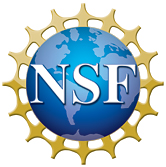Material: CuS
Earth abundance [1]: Good crystals are extremely rare
Basic Info
- Occurs in nature as the mineral Covellite [1]
- Usually as indigo-blue massive metallic material [1]
- Discovered in 1832 [1]
- Found in copper deposits [1]
- Named after the Italian mineralogist, N. Covelli (1790-1829) [2]
- Molecular Weight = 95.61 gm [2]
Physical Properties [1]:
|
Sub-Metallic |
|
|
Diaphaneity (Transparency): |
Opaque |
|
Color: |
Indigo-blue or darker, inclining towards blue-black, often iridescent with purplish, deep red, and brassy-yellow reflections. |
|
Streak: |
Shiny metallic, lead-grey to black |
|
Hardness (Mohs): |
1½ - 2 |
|
Hardness (Vickers): |
VHN100=128 - 138 kg/mm2 |
|
Hardness Data: |
Measured |
|
Tenacity: |
Flexible |
|
Cleavage: |
Perfect |
|
Fracture: |
Irregular/Uneven, Hackly |
|
Density (measured): |
4.6 - 4.76 g/cm3 |
|
Density (calculated): |
4.602 g/cm3 |
Calculated Properties [2]:
|
Electron Density: |
Bulk Density (Electron Density)=4.41 gm/cc |
|
Fermion Index: |
Fermion Index = 0.0025153223 |
|
Photoelectric: |
PECovellite = 31.55 barns/electron |
Crystal Structure [1]:
|
Crystal System: |
Hexagonal |
|
Class (H-M): |
6/mmm (6/m 2/m 2/m) - Dihexagonal Dipyramidal |
|
Space Group: |
P63/mmc {P63/m 2/m 2/c} |
|
Cell Parameters: |
a = 3.7938Å, c = 16.341Å |
|
Ratio: |
a:c = 1 : 4.307 |
|
Unit Cell Volume: |
V 203.7 ų |
|
Z: |
6 |
|
Morphology: |
Hexagonal plates {001}, with pyramidal faces striated horizontally and hexagonal striations on the base. Common forms: {001}, {104}, {103}, {308}, {102}, {9/0/16}, {5.08}, {101} and {201}. Less common to rare: {1.0.16}, {1.0.12}, {3.0.32}, {108}, {106}, {3.0.16}, {105}, {205}, {203}, {304}, {15.0.16} and {908}. |
|
Twinning: |
None reported. |
|
X-Ray Powder Diffraction Data [1]: |
|
PV Applications:
CuS thin films are deposited by a chemical bath on top of other thin films such as Sb2S3 [3] and SnS [4]. Then the films are heat treated with Nitrogen and used as an absorber layer [3].
Layer structures were: CuS, SnS, CdS, SnO2 [4] and Sb2S2-CuS, Sb2S3, CdS, TCO [3]
Band structure and carrier concentration
Band Gap [5]: 1.55 eV
Carrier Concentration [6]: +2.5×1021 cm-3
Temperature Dependences
A graph showing density of states for CuS vs (E-Ef) (Ryd) can be found at reference 7.
Electrical Properties
Conductivity [6]: 2×103 S cm-1
DC resistance [8]: 7.5 × 103 Ω
Resistivity [8]: 2.67 Ω cm
Basic Parameters of Electrical Properties
Electrical conductivity of CuS thin film [5]: 3.6 x 103 Ω-1 cm-1
The Hall mobility [6]: 7.24cm2 V-1 s-1
Optical properties [1] :
|
Type: |
Uniaxial (+) |
|
RI values: |
nω = 1.450 nε = 2.620 |
|
Maximum |
δ = 1.170 |
|
Surface Relief: |
Very High |
|
Type: |
Anisotropic |
|
Anisotropism: |
Strong |
|
Dispersion: |
Strong |
|
Pleochroism: |
Visible |
|
Comments: |
Deep blue to blue-white |
Thermal properties
Mechanical properties [8]

Scratch resistance [8]: 3 mN
References:
[1] J. Ralph, I. Chau, mindat Available at: <http://mindat.org> (2012).
[2] WebMineral, “Covellite Mineral Data”, http://webmineral.com/data/Covellite.shtml#.UmK-dvlvNlJ
[3] http://www.sciencedirect.com.ezproxy.lib.utah.edu/science/article/pii/S0040609006016129
[4] http://www.sciencedirect.com.ezproxy.lib.utah.edu/science/article/pii/S004060900601604X
[5] http://iopscience.iop.org.ezproxy.lib.utah.edu/0268-1242/13/10/019/pdf/0268-1242_13_10_019.pdf
[6] http://scitation.aip.org.ezproxy.lib.utah.edu/content/aip/journal/apl/93/13/10.1063/1.2991441
[7] http://iopscience.iop.org.ezproxy.lib.utah.edu/0953-8984/4/50/034/pdf/0953-8984_4_50_034.pdf
[8] http://www.sciencedirect.com.ezproxy.lib.utah.edu/science/article/pii/S0025540810004046
The development of these pages on photovoltaic materials’ properties was carried out at the University of Utah primarily by undergraduate students Jeff Provost and Carina Hahn working with Prof. Mike Scarpulla. Caitlin Arndt, Christian Robert, Katie Furse, Jash Sayani, and Liz Lund also contributed. The work was fully supported by the US National Science Foundation under the Materials World Network program award 1008302. These pages are a work in progress and we solicit input from knowledgeable parties around the world for more accurate or additional information. Contact [email protected] with such suggestions. Neither the University of Utah nor the NSF guarantee the accuracy of these values.

